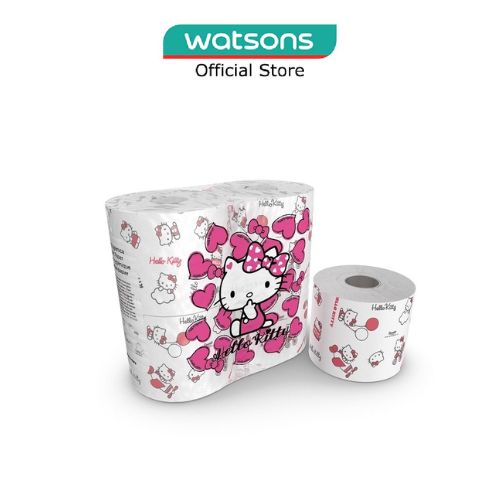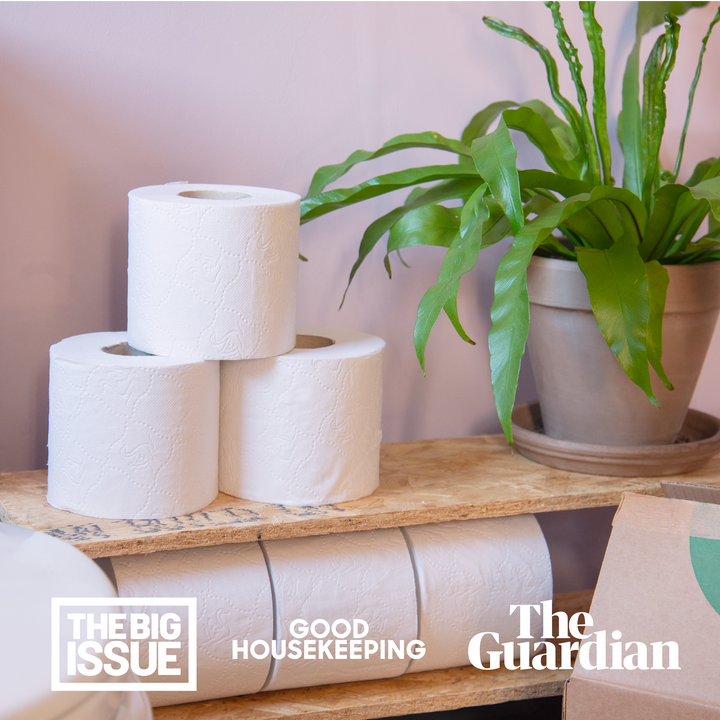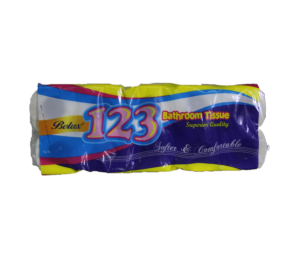toilet tissue, the ubiquitous bathroom necessity, has a surprising and often overlooked history. From ancient leaves to modern-day softness, the evolution of this essential hygiene product has been a bumpy road filled with innovation, controversy, and cultural shifts. Let’s delve into the fascinating journey of toilet tissue through the ages.
Is toilet paper the Best Choice?

The Evolution of Toilet Tissue
The use of toilet paper dates back centuries, with different materials being used across various cultures and time periods. From leaves and stones to linen and paper, toilet tissue has undergone significant transformations to become the soft and absorbent product we know today.
Environmental Impact of Toilet Paper
One of the biggest concerns surrounding toilet paper is its environmental impact. The production of toilet paper, particularly from virgin wood pulp, contributes to deforestation and habitat destruction. However, there are more sustainable options available, such as recycled toilet paper and bamboo toilet paper.
Choosing the Right Toilet Paper
When selecting a toilet paper brand, it’s essential to consider factors like sustainability, softness, strength, and septic tank compatibility. With a wide range of options on the market, each boasting different features, finding the best toilet paper for your needs requires careful consideration.
The Great Toilet Paper Debate

Over vs. Under
The age-old debate of whether toilet paper should hang over or under the roll continues to divide households around the world. While some argue that over is more convenient, others swear by the under method. Ultimately, the direction in which toilet paper hangs is a matter of personal preference.
Quilted vs. Plain
Another point of contention in the world of toilet paper is the choice between quilted and plain varieties. Quilted toilet paper offers added softness and comfort, but some prefer the simplicity and affordability of plain toilet paper. Ultimately, the decision comes down to individual preference and budget.
Scented vs. Unscented
Scented toilet paper has gained popularity for its ability to mask odors and leave a fresh fragrance after use. However, some individuals may be sensitive to scents or prefer unscented options for personal or environmental reasons. Choosing between scented and unscented toilet paper is a matter of personal preference.
The Truth About Toilet Paper

Myths vs. Facts
There are many myths and misconceptions surrounding toilet paper, from claims about its impact on health to its supposed superiority over alternative cleaning methods. Separating fact from fiction is crucial to understanding the role of toilet paper in hygiene and sanitation practices.
Toilet Paper and Personal Hygiene
While toilet paper is a convenient and widely used cleaning tool, it is not the only option available. Bidets, wet wipes, and other personal hygiene products offer alternatives to traditional toilet paper and may provide additional benefits in terms of cleanliness and comfort.
Proper Toilet Paper Disposal
Proper disposal of toilet paper is essential to prevent clogged pipes, sewage backups, and environmental pollution. Understanding how to dispose of toilet paper safely and responsibly can help reduce the impact of this everyday product on plumbing systems and ecosystems.
Toilet Paper: A History
Ancient Toiletries
The earliest humans had to make do with whatever nature had to offer for their toilet needs. Leaves, stones, and animal skins were used for wiping, while mud was employed for cleaning. In ancient Egypt, papyrus was used as a luxurious toilet paper. The Greeks and Romans favored wool and sponges, which they meticulously cleaned for reuse.
| Material | Civilization |
|---|---|
| Leaves | Early Humans |
| Papyrus | Ancient Egyptians |
| Wool | Greeks |
| Sponges | Romans |
Medieval Europe
In medieval Europe, linens were the preferred toilet paper among the wealthy. The less fortunate used animal skins and other rough materials. During the Middle Ages, wassailing, the consumption of large amounts of alcohol at parties, was also associated with wiping in lieu of formal toilet arrangements.
| Wealthy | Less Fortunate |
|---|---|
| Linens | Animal Skins |
| Rough Materials |
The Future of Toilet Paper
Innovations in Toilet Paper
The future of toilet paper is ripe with innovations aimed at enhancing sustainability, comfort, and hygiene. From bamboo-based toilet paper to flushable wet wipes, manufacturers are constantly striving to improve upon this essential bathroom product.
Sustainable Practices
As awareness of environmental issues grows, the demand for eco-friendly toilet paper is on the rise. Brands are adopting more sustainable practices, such as using recycled materials, reducing packaging waste, and supporting reforestation efforts, to minimize the ecological footprint of their products.
Technological Advancements
Advances in technology have led to the development of smart toilet paper dispensers, scented rolls with built-in air fresheners, and other high-tech solutions aimed at improving the overall bathroom experience. The integration of technology into toilet paper products is shaping the future of this everyday essential.
Toilet Paper: Friend or Foe?
Hygiene Considerations
While toilet paper plays a crucial role in maintaining personal hygiene, its effectiveness can vary depending on factors like thickness, texture, and moisture content. Understanding the importance of proper wiping techniques and hygiene practices is essential for maximizing the benefits of toilet paper.
Health Implications
Improper use of toilet paper, such as excessive wiping or harsh rubbing, can lead to skin irritation, infections, and other health issues. Choosing the right type of toilet paper and practicing gentle hygiene habits are key to preventing potential health implications associated with toilet paper use.
Cultural Perspectives
Cultural attitudes toward toilet paper vary around the world, with some societies favoring water-based cleansing methods over dry paper. Understanding different cultural perspectives on bathroom hygiene can shed light on the diversity of practices and preferences related to toilet tissue.
The Great Toilet Paper Shortage of 2020
Panic Buying and Stockpiling
The onset of the COVID-19 pandemic in 2020 sparked a global toilet paper shortage as panicked consumers rushed to stockpile essential supplies. Empty store shelves and online price gouging highlighted the fragility of supply chains and the unpredictable nature of crisis-induced buying behaviors.
Lessons Learned
The toilet paper shortage of 2020 served as a wake-up call for many individuals and businesses regarding the importance of emergency preparedness and responsible consumption. It underscored the need for resilience in supply chains and the value of community cooperation during times of crisis.
Moving Forward
As the world recovers from the impacts of the pandemic, discussions around toilet paper shortages and supply chain vulnerabilities continue. Finding a balance between preparedness and overconsumption remains a priority for ensuring a stable and sustainable toilet paper supply in the future.
The Best Toilet Paper for Your Needs
Factors to Consider
When choosing the best toilet paper for your needs, consider factors such as ply count, softness, strength, absorbency, and environmental impact. Assessing these criteria can help you determine which type of toilet paper aligns with your preferences and values.
Top Toilet Paper Brands
Several reputable toilet paper brands offer a range of products tailored to different preferences and requirements. Whether you prioritize sustainability, comfort, or affordability, exploring top toilet paper brands can help you make an informed decision when shopping for this essential bathroom item.
Consumer Reviews and Recommendations
Reading consumer reviews and recommendations can provide valuable insights into the performance and quality of various toilet paper brands. Learning from the experiences of other users can guide you in selecting a reliable and satisfactory toilet paper product for your household.
Toilet Paper: The Good, the Bad, and the Ugly
Benefits of Toilet Paper
Toilet paper offers convenience, hygiene, and comfort in daily bathroom routines. Its disposable nature makes it a practical and efficient cleaning tool, while advancements in production techniques have led to softer and more absorbent varieties that enhance the user experience.
Drawbacks of Toilet Paper
Despite its widespread use, toilet paper is not without its drawbacks. Issues like environmental impact, plumbing problems, and health concerns related to chemical additives in certain brands raise questions about the long-term sustainability and safety of traditional toilet paper products.
Sustainable Alternatives
To address the environmental challenges posed by conventional toilet paper, sustainable alternatives like bamboo toilet paper, recycled toilet paper, and biodegradable wet wipes have emerged as eco-friendly options. Making the switch to sustainable toilet paper can help reduce waste and support conservation efforts.
Toilet Paper: Everything You Need to Know
Frequently Asked Questions
From how toilet paper is made to the best practices for toilet paper disposal, there are numerous questions surrounding this everyday product. Exploring common inquiries about toilet paper can deepen your understanding of its production, usage, and impact on personal and environmental health.
Expert Insights
Experts in hygiene, sanitation, and environmental science offer valuable insights into the role of toilet paper in modern society. By learning from their expertise, you can gain a comprehensive perspective on the benefits, challenges, and future trends shaping the world of toilet tissue.
Tips for Optimal Toilet Paper Use
Maximizing the benefits of toilet paper involves using it effectively and responsibly. Simple tips like folding instead of crumpling, avoiding excessive amounts per use, and following proper disposal guidelines can enhance the efficiency and sustainability of your toilet paper habits.
Conclusion
In conclusion, toilet tissue has come a long way from its humble origins to become an essential part of everyday hygiene practices. As we navigate the complexities of choosing the right toilet paper, addressing environmental concerns, and preparing for unforeseen shortages, it’s important to stay informed and proactive in our approach to this fundamental bathroom staple. By exploring the history, debates, and innovations surrounding toilet paper, we can make more informed decisions that benefit both ourselves and the planet. Next time you reach for a roll of toilet paper, remember the journey it has taken to reach your bathroom, and consider the choices you can make to support a cleaner, greener future for all.Toilet paper plays a crucial role in maintaining personal hygiene, and its effectiveness can vary depending on factors like thickness, texture, and moisture content. Understanding the importance of proper wiping techniques and hygiene practices is essential for maximizing the benefits of toilet paper.
Health Implications
Improper use of toilet paper, such as excessive wiping or harsh rubbing, can lead to skin irritation, infections, and other health issues. Choosing the right type of toilet paper and practicing gentle hygiene habits are key to preventing potential health implications associated with toilet paper use.
Cultural Perspectives
Cultural attitudes toward toilet paper vary around the world, with some societies favoring water-based cleansing methods over dry paper. Understanding different cultural perspectives on bathroom hygiene can shed light on the diversity of practices and preferences related to toilet tissue.
The Great Toilet Paper Shortage of 2020
Panic Buying and Stockpiling
The onset of the COVID-19 pandemic in 2020 sparked a global toilet paper shortage as panicked consumers rushed to stockpile essential supplies. Empty store shelves and online price gouging highlighted the fragility of supply chains and the unpredictable nature of crisis-induced buying behaviors.
Lessons Learned
The toilet paper shortage of 2020 served as a wake-up call for many individuals and businesses regarding the importance of emergency preparedness and responsible consumption. It underscored the need for resilience in supply chains and the value of community cooperation during times of crisis.
Moving Forward
As the world recovers from the impacts of the pandemic, discussions around toilet paper shortages and supply chain vulnerabilities continue. Finding a balance between preparedness and overconsumption remains a priority for ensuring a stable and sustainable toilet paper supply in the future.
The Best Toilet Paper for Your Needs
Factors to Consider
When choosing the best toilet paper for your needs, consider factors such as ply count, softness, strength, absorbency, and environmental impact. Assessing these criteria can help you determine which type of toilet paper aligns with your preferences and values.
Top Toilet Paper Brands
Several reputable toilet paper brands offer a range of products tailored to different preferences and requirements. Whether you prioritize sustainability, comfort, or affordability, exploring top toilet paper brands can help you make an informed decision when shopping for this essential bathroom item.
Consumer Reviews and Recommendations
Reading consumer reviews and recommendations can provide valuable insights into the performance and quality of various toilet paper brands. Learning from the experiences of other users can guide you in selecting a reliable and satisfactory toilet paper product for your household.
Toilet Paper: The Good, the Bad, and the Ugly
Benefits of Toilet Paper
Toilet paper offers convenience, hygiene, and comfort in daily bathroom routines. Its disposable nature makes it a practical and efficient cleaning tool, while advancements in production techniques have led to softer and more absorbent varieties that enhance the user experience.
Drawbacks of Toilet Paper
Despite its widespread use, toilet paper is not without its drawbacks. Issues like environmental impact, plumbing problems, and health concerns related to chemical additives in certain brands raise questions about the long-term sustainability and safety of traditional toilet paper products.
Sustainable Alternatives
To address the environmental challenges posed by conventional toilet paper, sustainable alternatives like bamboo toilet paper, recycled toilet paper, and biodegradable wet wipes have emerged as eco-friendly options. Making the switch to sustainable toilet paper can help reduce waste and support conservation efforts.
Toilet Paper: Everything You Need to Know
Frequently Asked Questions
From how toilet paper is made to the best practices for toilet paper disposal, there are numerous questions surrounding this everyday product. Exploring common inquiries about toilet paper can deepen your understanding of its production, usage, and impact on personal and environmental health.
Expert Insights
Experts in hygiene, sanitation, and environmental science offer valuable insights into the role of toilet paper in modern society. By learning from their expertise, you can gain a comprehensive perspective on the benefits, challenges, and future trends shaping the world of toilet tissue.
Tips for Optimal Toilet Paper Use
Maximizing the benefits of toilet paper involves using it effectively and responsibly. Simple tips like folding instead of crumpling, avoiding excessive amounts per use, and following proper disposal guidelines can enhance the efficiency and sustainability of your toilet paper habits.
Conclusion
In conclusion, toilet tissue has come a long way from its humble origins to become an essential part of everyday hygiene practices. As we navigate the complexities of choosing the right toilet paper, addressing environmental concerns, and preparing for unforeseen shortages, it’s important to stay informed and proactive in our approach to this fundamental bathroom staple. By exploring the history, debates, and innovations surrounding toilet paper, we can make more informed decisions that benefit both ourselves and the planet. Next time you reach for a roll of toilet paper, remember the journey it has taken to reach your bathroom, and consider the choices you can make to support a cleaner, greener future for all.